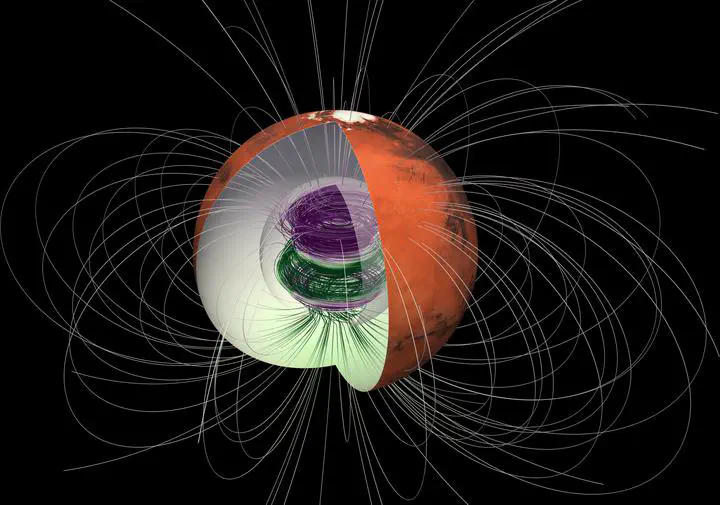An Ancient Martian Dynamo Driven by Hemispheric Heating: Effect of Thermal Boundary Conditions

Abstract
Magnetic field observations from the MGS, MAVEN, and InSight missions reveal that a dynamo was active in Mars’s early history. One unique feature of Mars’s magnetic crustal field is its hemispheric dichotomy, where magnetic fields in the southern hemisphere are much stronger than those in the northern hemisphere. Here we use numerical dynamo simulations to investigate the potential hemispheric nature of Mars’s ancient dynamo. Previous studies show that a hemispheric heat flux perturbation at the core–mantle boundary could result in either a stable hemispherical magnetic field or a constantly reversing field, depending on choices of parameters used in those models. These two scenarios lead to different implications for the origin of crustal fields. Here we test the dynamo sensitivity to varying hemispheric heat flux perturbations at the core–mantle boundary in a broader parameter regime to understand whether a hemispheric dynamo is likely for early Mars. We find that features of the dynamo change from stable, hemispheric magnetic fields to reversing, hemispheric fields, with increasing hemispheric heat flux perturbations at the core–mantle boundary. We also find that magnetic fields powered by bottom heating are more stable and transition from a nonreversing, hemispheric magnetic field to a multipolar field at higher hemispheric heat flux perturbations, while the transition happens at a much lower heat flux perturbation for magnetic fields powered by internal heating.